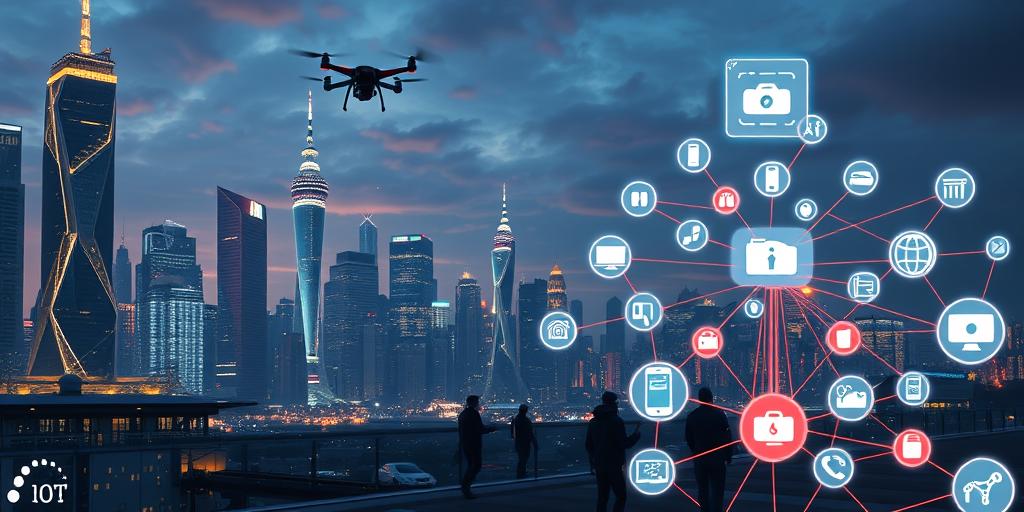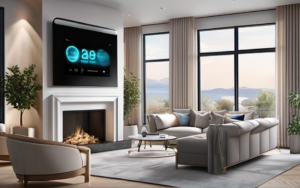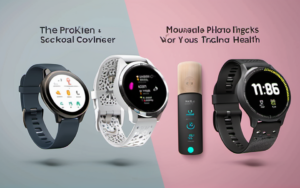Imagine a world where your home anticipates your needs, your car communicates with traffic signals, and your appliances operate seamlessly, all without you lifting a finger. This is the reality we’re moving towards with the Internet of Things (IoT), and at the heart of this interconnected future are IoT gadgets. These devices, ranging from smart speakers to wearable fitness trackers, play a crucial role in bridging the gap between the physical and digital worlds.
The Internet of Things (IoT): A Connected World
The Internet of Things (IoT) refers to the network of physical objects, or “things,” embedded with sensors, software, and other technologies that enable them to collect and exchange data. This interconnectedness allows these objects to communicate with each other and with humans, creating a vast ecosystem of smart devices.
What is the IoT?
Imagine a world where your home anticipates your needs, your car communicates with traffic signals, and your appliances operate seamlessly, all without you lifting a finger. This is the reality we’re moving towards with the Internet of Things (IoT), and at the heart of this interconnected future are IoT gadgets. These devices, ranging from smart speakers to wearable fitness trackers, play a crucial role in bridging the gap between the physical and digital worlds.
The Importance of Connectivity
The beauty of the IoT lies in its ability to connect diverse devices, creating a network of intelligent systems. This connectivity fosters seamless communication and data sharing, allowing devices to collaborate and react in real-time to changing conditions. For example, your smart thermostat can adjust the temperature based on your location data from your smartphone, ensuring optimal comfort and energy efficiency.
Gadgets: The Building Blocks of the IoT
The IoT is built upon a foundation of gadgets, each serving a specific purpose within the interconnected network. These devices act as the physical manifestation of the IoT, transforming everyday objects into intelligent components.
Smart Home Devices
The smart home revolution has brought forth a wide array of gadgets designed to enhance our living spaces.
Smart Speakers
Devices like Amazon Echo and Google Home have become central hubs for controlling smart home devices, providing voice-activated control for music, information, and even home automation.
Smart Lighting
Smart bulbs, like those from Philips Hue, allow you to control lighting remotely, schedule lighting routines, and even adjust color temperature for different moods.
Smart Security Systems
Security cameras, door locks, and motion sensors can be integrated into a smart home system, providing real-time monitoring and alerts for enhanced peace of mind.
Wearable Technology
Wearable devices have become increasingly popular, offering a range of functionalities to monitor our health, fitness, and daily activities.
Fitness Trackers
Fitbit and other fitness trackers monitor steps, heart rate, sleep patterns, and more, empowering individuals to make healthier lifestyle choices.
Smartwatches
Smartwatches like the Apple Watch and Samsung Galaxy Watch offer a range of features, from making calls and sending messages to tracking fitness metrics and controlling smart home devices.
Connected Cars
Modern vehicles are increasingly becoming connected to the internet, enabling features such as remote starting, navigation updates, and even autonomous driving capabilities.
Industrial IoT Devices
The IoT is not limited to consumer applications; it’s also transforming industries. Industrial IoT devices, such as sensors for monitoring equipment performance and robots for automating tasks, are driving efficiency and innovation in manufacturing, logistics, and other sectors.
The Role of Gadgets in the IoT Ecosystem
IoT gadgets are more than just smart devices; they are the essential components that enable the functionality and benefits of the interconnected world.
Data Collection and Transmission
IoT gadgets are equipped with sensors that collect data about their surroundings, such as temperature, humidity, or motion. This data is then transmitted wirelessly to a central hub, where it can be analyzed and used to make informed decisions.
Automation and Control
IoT gadgets can be programmed to automate tasks and respond to specific conditions. For example, a smart sprinkler system can automatically adjust watering based on weather forecasts, ensuring optimal plant health while conserving water.
Enhanced User Experience
IoT gadgets aim to enhance user experience by providing convenience, personalization, and improved efficiency. For example, a smart refrigerator can automatically reorder groceries when supplies run low, saving time and eliminating the hassle of remembering what you need.
The Future of Gadgets in the IoT
The future of the IoT is brimming with exciting possibilities, driven by advancements in technology and a growing demand for interconnected solutions.
Advancements in Artificial Intelligence (AI)
AI is playing a crucial role in shaping the future of the IoT. AI-powered IoT gadgets will become more intelligent and capable of learning and adapting to user preferences and environmental changes. For example, smart home devices will be able to anticipate your needs based on your daily routines, providing personalized experiences.
Increased Interoperability
As the IoT matures, there will be an increasing emphasis on interoperability, ensuring seamless communication between devices from different manufacturers. This will allow for the creation of more sophisticated and integrated IoT ecosystems.
The Rise of Edge Computing
Edge computing, which processes data closer to the source rather than relying on centralized cloud servers, is poised to play a more prominent role in the IoT. This will enable faster response times and greater efficiency for IoT gadgets, particularly in applications where real-time data processing is critical.
The transformative power of IoT gadgets is undeniable. From automating tasks to providing valuable insights, these devices are shaping the way we live, work, and interact with the world around us. As the IoT continues to evolve, IoT gadgets will play an increasingly central role in creating a more connected, intelligent, and efficient future.




